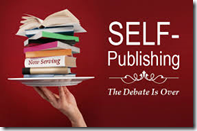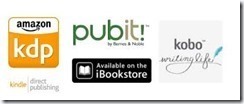Self-Publishing, Part 1
I am dipping into the scary waters of self-publishing. This difficult decision came about for several reasons. I did a brief survey of readers on my Facebook author page asking if they’d prefer, for an original mystery I’ve written, (a) the expensive hardcover library edition that wouldn’t come out for another year, (b) an ebook version being released as soon as possible for $2.99, or (3) a simultaneous ebook and mass market release with the ebook possibly priced over $5.00. Again, this release date might not be until 2015.
The majority of readers voted for (b), the quick and less expensive ebook edition. This choice corresponds to my self-publishing this work, rather than pursuing small press or traditional NY publisher. For either of those, a wait of over a year before publication would be likely, with no control over the resultant price of the books.
If I were a new author, I’d choose the publisher route to establish credentials. But I already have a fan base for my mysteries. Hopefully these readers will be eager to try an original work and potentially book one in a new series.
So what are the steps to follow? I’ve put up one backlist title by myself. I formatted it for Kindle and Nook and Smashwords, hired a cover designer, and uploaded Keeper of the Rings to those retail sites. Since this title had already been published, I had the cover copy and quotes handily available. Not so for a totally original work.
I am following the steps so generously described by author Libby Fischer Hellmann at http://www.libbyhellmann.com/six-steps-of-self-publishing/. These steps are similarly described in the resource articles below.
Step number one is to Hire an Editor once you’ve finished your work. You may need two editors, a developmental and a copy editor. Or you may employ other writer professionals in a time swap arrangement, beta readers, and critique partners. If you are a new author, it is critically important that you follow this step and work with a professional editor.
Next on the list is preparing the Front and Back Materials. Author Marie Force gives a comprehensive discussion of what these should include at http://e-bookformattingfairies.blogspot.com/2012/03/front-matter-and-back-matter-why-it.html.
Author Terry Odell recommends putting most of the items in the back so as not to obstruct the “Sample Preview” offered by Amazon. Terry also made another good point in suggesting I leave off listing the Cast of Characters, because e-book readers won’t be able to flip back to the front of the book for reference. So my front material consists merely of the Copyright Page. I am not having a Dedication, but the front is where this page would go, as well as any advance review quotes for your book.
The back end materials take more time to prepare. First come the Acknowledgments, moved from the front as Terry suggested. Next is an author’s note that reads thus:
Thank you for reading [book title]. If you enjoyed this story, please support the author’s efforts by helping other readers find this book. Here are some suggestions for your consideration.
Write an online customer review.
Gift a copy of this book to a booklover friend.
Sign up for Nancy’s quarterly email newsletter on her website.
Follow Nancy on her social media sites.
Spread the word about her work.
Suggest her titles to a local book club.
Following this page is my About the Author section with social media links. Finally, I have a page with More Books by Nancy J. Cohen. If I can get my formatter to link these titles to the appropriate bookstore, that would be great. Otherwise, the list remains as is.
Another section you can add here is a chapter from your upcoming sequel or excerpts from your other published works. My sequel isn’t far enough along for me to add this additional page.
Keep in mind that these bonus materials add to the length of your book. From what I’ve been reading, this becomes important when formatting your work for Createspace, but that’s another topic down the road, However, if you will be having a cover artist do the spine and back cover for a print book, she may need to know the spine width and that might relate to the number of pages.
Now I’ve added my front and back materials. It’s time to move on to the back cover copy.
In my view, that’s harder than writing the book.
As you can see, this venture promises to be incredibly time consuming the first time around. Thereafter, I imagine it is easier because you can just repeat your steps. Will the effort be worth the reward? I hope so, because these publishing duties steal time from writing the next book.
It’s exciting to think I’ll have something different to offer my fans, in addition to the Bad Hair Day and Drift Lords series that are on-going. This makes me one of the new breed of hybrid authors. I hope you’ll continue to follow me on this journey of exploration.
Useful Articles on Self-Publishing
http://www.libbyhellmann.com/six-steps-of-self-publishing/
http://e-bookformattingfairies.blogspot.com/2012/03/front-matter-and-back-matter-why-it.html
http://gigipandian.blogspot.com/2012/03/20-steps-in-self-publishing.html
http://www.authorems.com/self-publishing/


Nancy's Notes from Florida
- Nancy J. Cohen's profile
- 667 followers






